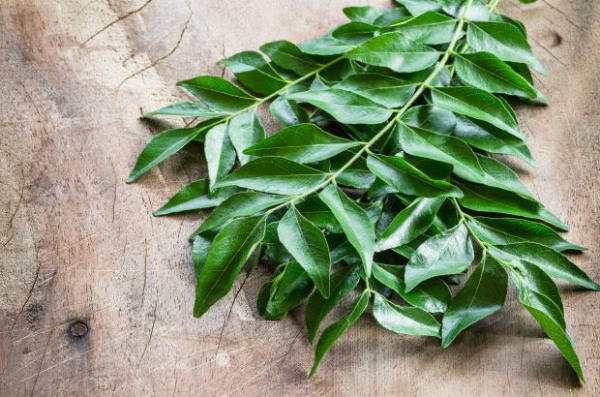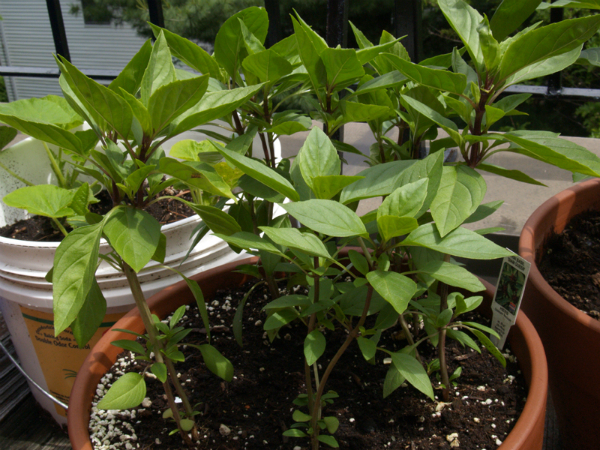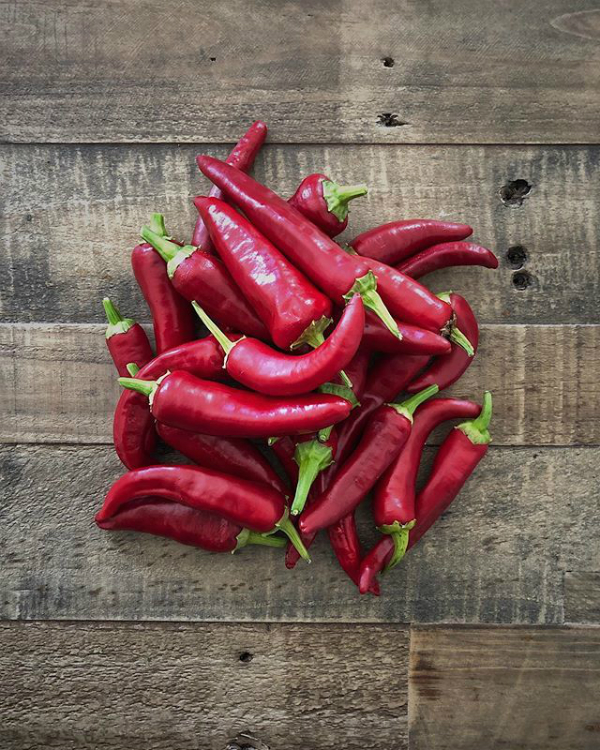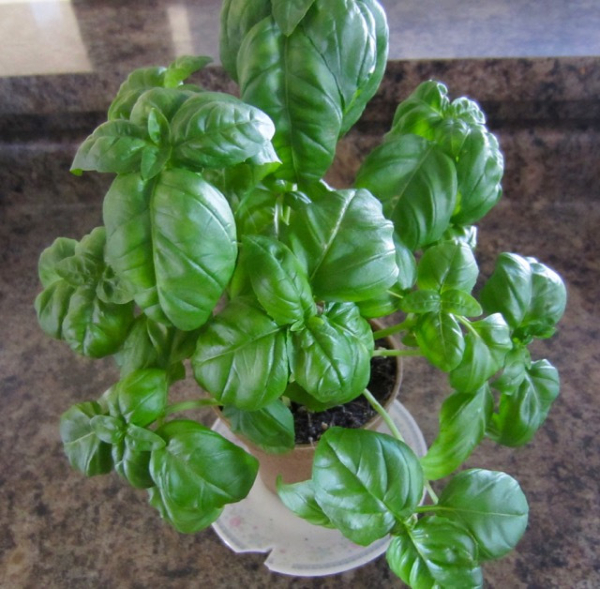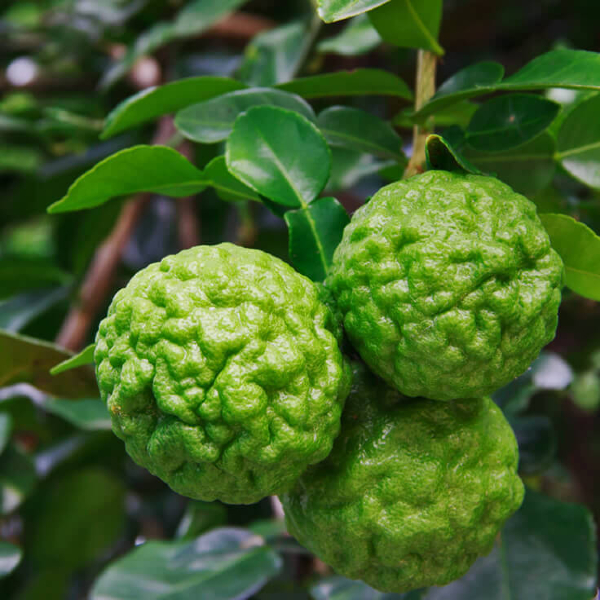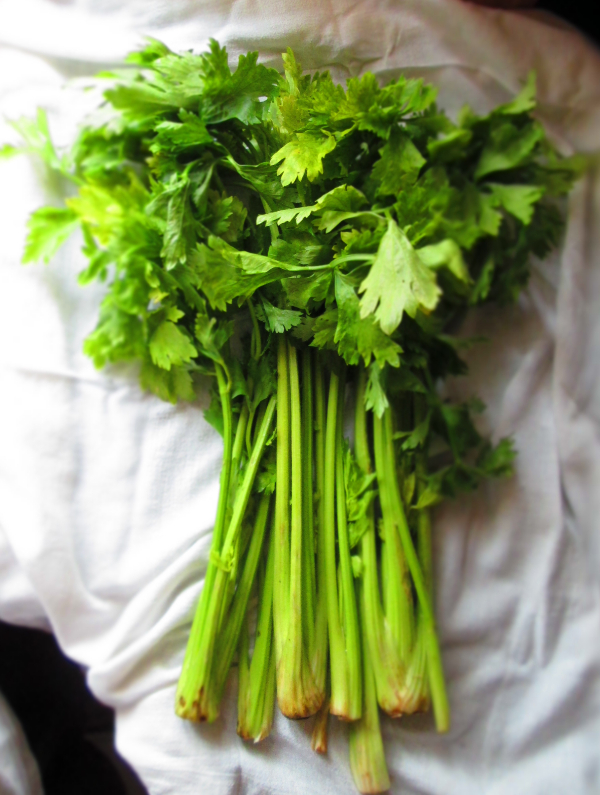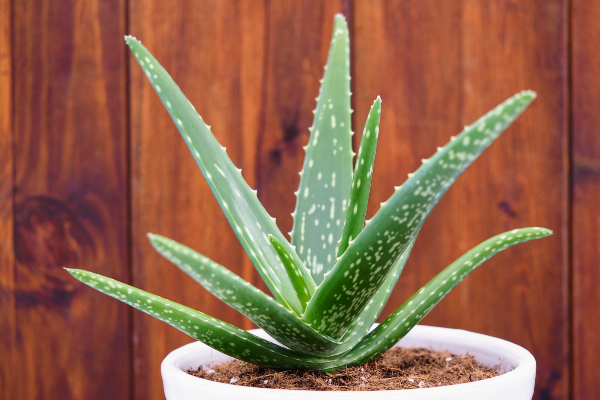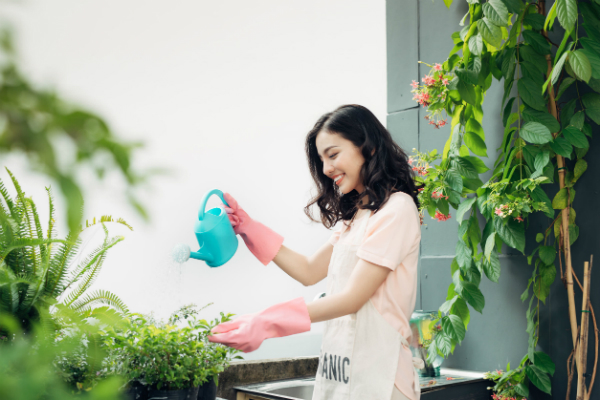Growing your own kitchen garden is a popular green-fingered choice.
It not only offers up the chance to enjoy your own fresh produce, but it’s particularly helpful for growing a fresh range of herbs and spices that really put the flavour into great cuisine!
DIY gardening in Malaysia isn’t just for those lucky people with landed properties, though.
You can grow a range of herbal plants such as Chinese herbs, Malay herbs, and whatever other herbs and spices you’ve got, if you have the patience and space to nurture.
It all adds up to a great option for your next meal. But, don’t be fooled into thinking that a ‘kitchen garden’ just means a very lonely little plant pot in your kitchen window!
A kitchen garden really relates to any space (outdoor or indoor) that you use specifically for the purpose of spicing up the food made in your own kitchen.
It’s a simple way to enjoy the benefits of fresh herbs right in your own home. That means every window or spare space in your home could be used to maximise the benefits with your very own herbs garden.
What Herbs Can You Grow In Malaysia, And How Should You Care For Them?
Herb |
Benefits |
|
Curry leaves
|
Prolific grower and easy to care for. Fry and use in curries and stir-fries.
|
|
Rosemary
|
Save money on buying rosemary from the supermarket, can be used for seasoning in a variety of dishes, such as soups, casseroles, salads, and stews.
|
|
Lemongrass
|
Prolific grower and easy to care for. Staple in Malaysian cooking.
|
|
Mint
|
Provide you with fresh mint year round for cooking, tea, and garnishes.
|
|
Coriander
|
Easy to care for and versatile in use.
|
|
Thai basil
|
Extremely prolific grower, and can be eaten raw in soups and salads.
|
|
Chili
|
Provides you with fresh chili at the ready (who doesn’t love their spice!), and doubles as an ornamental plant.
|
|
Sweet basil
|
Save money on buying sweet basil from the supermarket which can be expensive and difficult to find.
|
|
Culantro
|
This isn’t a spelling error! Easy to grow plant, and not readily found locally.
|
|
Kaffir lime
|
Grows into a beautiful statement tree, both leaves and fruit can be used.
|
|
Chinese celery
|
Easy to care for and versatile in use.
|
|
Thyme / Oregano / Dill
|
As these herbs in fresh form are not always easy to find, growing it at home will allow you to enjoy it all year round without having to buy from the supermarket.
|
|
Aloe Vera
|
Can tolerate neglect, able to use for a variety of purposes outside of eating.
|
In Malaysia, herbs offer a particularly important part of our cultural cuisine heritage.
You can incorporate Malay herbs alongside Indian spices or Chinese herbs, embracing that global cultural heritage of fine food and flavours.
Think of all the amazing fusion of flavours built into our heritage! The joys of Nyonya cuisine with its unique blend of flavours from varied cultural roots.
The mix of fiery spices that contribute to Penang’s enviable food reputation. The influence of European and Indian spices alike, that showcase Melaka’s trading heritage in its modern cuisine.
There are a number of great herbs you can grow in your kitchen garden. That’s everything from traditional Malaysian herbs, to popular choices for favourite dishes.
Here are some great choices from indoor to outdoor growing environments:
1) Curry leaves
Curry leaves are the foundation of many an amazing dish, and you’ll be glad to know they’re also relatively easy to grow.
You can place a curry plant in soil in your garden, or pot them for indoor growing, and they can be grown from either a cutting or seeds.
PropertyGuru Tip
A cutting refers to a part of the plant, whether it’s a piece of the root or the stem, that’s used to grow an entire new plant. This type of process is known as ‘striking’, where a stem cutting will produce new roots, and a root cutting will produce new stems!
With an origin in India, the good news is curry plants grow better in a warm environment, making them an ideal match for Malaysia.
They grow to a reasonable size as they mature, with some trees reaching up to six metres, so they’re less suited to a window pot than a standing pot in the house (or outdoor setting) as they get bigger.
2) Rosemary
This herb is originally native to the Mediterranean region, but it offers a welcome boost to many modern dishes. It goes particularly well with lamb, or to pack some punch into tasty potato recipes.
Rosemary is a relatively robust plant that will grow in conditions both outside and inside. It’s the perfect choice for a spot in the kitchen or in a window planter.
Make sure it gets a bit of sun every day, and keep it watered, while ensuring that the soil can drain any excess liquid.
3) Lemongrass
The unmissable flavour of lemongrass is a popular addition to many Southeast Asian cuisines, and one of the more common herbs in Malaysia.
It was originally native to areas of South India, but grows well in Malaysia’s warm and humid climate.
Make sure to provide your lemongrass with plenty of sun, as well as an area of soil that drains well to avoid it becoming waterlogged.
This is one of those plants that keeps going once it’s rooted, so expect a decent sized area of growth if growing this outdoors. Lemongrass plants can eventually grow to about 1.5 metres in height.
4) Mint
If you’re looking for an easy herb to grow, you don’t need to look much further than mint.
This hardy little plant is fast growing, and can quickly take over a corner of your garden patch if you’re not careful.
It’s great for an indoor planting too, just needing some light and regular watering to see it thrive.
Aside from being a great addition to a variety of cuisines, mint is also sought after for its role as a pleasing and often medicinal tea. You’ll have plenty of it leftover, if you plant it with room to grow!
5) Coriander
No Malaysian herb list would be complete without coriander! Did you know that coriander is widely reported to be one of the oldest spices used in cuisine?
It’s considered native across a region that stretches from Europe to the southern reaches of Asia. You’ll be glad to know for your kitchen garden needs that coriander is also a relatively easy plant to grow.
You can simply take a small cutting of coriander and place into a small jar or tub of water to grow.
Just move it to a pot once it’s taken root. Water often in the seedling phases of growth, and reduce the frequency as it grows into a plant.
Coriander seeds can also be used for a flavour kick. Just cut the stems when the seeds have changed from a fresh green colour to a gray colour, and then leave them somewhere to dry.
6) Thai Basil
Thail basil is a fragrant and familiar herb that graces many delicious dishes in Malaysia. Although it’s often referred to as Thai basil, it’s actually native throughout the Southeast Asia region.
Once again, it’s another great option for both outdoor and indoor planting. It’s important to make sure this herb gets access to a good deal of sunlight, and is well watered to ensure moist soil that drains, to eliminate any water-logging.
If you’re growing indoors, be sure and water the plant if the soil becomes dry to the touch.
7) Chilli
Grow a bit of spice into your kitchen garden with chilli! The fruits of this delicious plant need no introduction, bringing a fiery kick to your dishes.
Chilli plants are also an attractive option, being simple to grow outdoors, and offering easy-care and aesthetically pleasing options indoors.
Give it a good watering when needed, but it’s okay to let it dry out a little between watering.
Make sure you increase watering during the growing season, and in particular when chilli fruits are full and ripe on the plant.
8) Sweet basil
We’ve mentioned Thai basil, but did you know that there’s another type of basil that you can grow at home?
The sweet, fragrant leaf synonymous with Italian cuisine is known as sweet basil. Compared to Thai basil, sweet basil has leaves that are much larger, more supple and tender.
The stalks of the plant are also much less hardy – making it a little more fragile than its Southeast Asian counterpart.
When planting sweet basil, it’s best not to expose it to harsh, direct afternoon sunlight. The tender leaves make it a favourite of garden snails too.
With sweet basil, all you have to do is be a little more wary of the pests and amount of sun – and the plant will provide you with fragrant basil for all your pasta, pizza and salad needs!
9) Culantro
Yes, this is spelled Culantro – not "Cilantro"! Culantro is a tropical herb that grows well in Malaysia. However, you may not be familiar with it as it’s more prominent in Thai and Vietnamese dishes rather than Malaysian.
Culantro resembles long, sawtooth-edged, serrated leaves which bear the fragrance of cilantro, with a little bit more intensity and pepperiness.
This herb may be difficult to find in Malaysia, so call yourself lucky if you manage to find it in nurseries!
Sourcing this herb is probably the more difficult part, while caring for it is a piece of cake. Care for culantro doesn’t differ too much from most tropical herbs on this list – simply grow in partial to full sun and water when the soil is dry.
10) Kaffir lime
If you’ve got the space to spare, a Kaffir lime tree makes for a fragrant addition to your home herb garden.
In Malaysia, Kaffir lime is typically grown from cuttings (ask a relative or a neighbour, they probably have it growing in their gardens!) Young plants can easily be found for cheap in nurseries as well.
As with most fruiting trees, this herb needs full, hot sun and appropriate fertiliser to bear their intensely fragrant citrus fruits for you. If the area is too shaded, the tree may not flower, but you’ve still got the leaves to cook with!
Kaffir lime leaves can be shredded very finely and included in curries and stir-fries for a fragrant kick.
11) Chinese celery
Chinese celery is better known as Daun Sup here in Malaysia. Physically, it resembles cilantro. Taste-wise, it offers a slightly more subtle, celery-like flavour that’s suitable to be cooked with.
This herb will thrive in morning sun (think an area with dappled sunlight), and kept moist with good drainage. Pop by your local nursery to find this potted herb, or sow seeds from scratch!
Snip off your homegrown Chinese celery to make delicious soups and broths at home.
12) Thyme
Thyme is a popular herb that is readily available dried. If you love the taste of thyme, you’d be glad to know that you can grow this herb right in your own home, just check out the video below!
Compared to other herbs not native to our hot, humid weather – thyme is a little more forgiving. This herb loves full sun and soil with good drainage, but be cautious of overwatering.
Thyme makes for a wonderful pairing for meat, cheese and eggs. Drying your own thyme bundles will intensify the flavours even further, and makes for a heartwarming gift!
13) Oregano
While we’re on the topic of thyme, let’s talk about oregano! The two herbs are often paired together and have similar growing conditions too.
Oregano can be grown in Malaysia’s hot sun, but dappled sun is best. Care should be taken to prevent overwatering.
The quintessential Italian herb, oregano is most commonly used in pasta sauces, and as a general seasoning for Italian dishes. Toss some in with your roast chicken and vegetables for an earthy, sweet aroma!
14) Dill
Dill is not prominent in Malaysian cooking. Look towards the Middle East or countries such as Norway and Sweden however, and you’ll find them flavouring everything from potatoes to fish to yogurt.
It’s certainly a shame that fresh dill isn’t used more often in our local cuisine, as dill is perfect to grow at home. The plant doesn’t require much space at all, and can flourish well in a pot.
The fine, delicate fronds have a wispy quality to them – which gives you a hint of how it should be grown. Bright indirect sunlight and good drainage is the key to growing dill well.
15) Aloe Vera
Ah, the trusty aloe vera! From healing cuts and scrapes to soothing sunburn to diced into drinks, the plant has been a funky cactus-like mainstay in Malaysian gardens for as long as we can remember.
Be wary when eating aloe vera, as certain species are not edible. If buying from a nursery, make sure to double check with the seller. Otherwise, you can seek out aloe vera “pups” from your friends, family or neighbours!
Grow aloe vera in bright indirect light to full sun and err on the side of underwatering rather than overwatering.
Best Herbs To Grow In Malaysia
While some herbs require a little more tender loving care, some trusty herbs simply take off as soon as their roots find soil. Below are 5 of the best herbs that are easiest and most rewarding to grow in our Malaysian climate.
- Thai basil
- Lemongrass
- Chili
- Curry leaves
- Kaffir lime
How To Prepare Your Kitchen Garden Before You Start Growing Herbs
Step 1: Determine the space
First things first, choose the space most suitable for starting your herb garden. Is it indoor or outdoor? How much sun does the area get, and what time of the day (morning sun/afternoon sun)?
Step 2: Ask yourself how much you’re willing to commit
Tending to your herb garden may not require much time, but it does require consistency in care. If you travel outstation often, you may want to choose herbs which can withstand neglect a little better.
You can always dip your feet in by starting off with a few small pots of herbs before upgrading to an entire herb and vegetable garden.
Step 3: Prepare the tools and materials
If you’re starting a simple potted herb garden, some tools and materials you would need include:
- Pots with drainage holes (the material of the pot matters too, terracotta dries the soil out faster, while ceramic is more water-retentive)
- Potting soil
- Suitable fertiliser
- Watering can or hose with suitable nozzle
- Gardening shears and trowel
Step 4: Source your favorite herbs!
Now for the fun part, start planting! After determining which plants would thrive best in the spot that you’ve chosen (and that you would use frequently), you can source for them from nurseries. Alternatively, ask a friend/relative or neighbour for a cutting that you can propagate.
Benefits Of A Kitchen Garden
There are many benefits to your own kitchen garden. It not only provides a plentiful supply of fresh herbs and spices, but offers a rewarding opportunity to provide for your own kitchen needs.
Here are just some of the major benefits for that green-fingered homegrown flavour:
1) Fresh flavours
Nothing is as fresh as that just-picked herb! Shops might be a great place to buy a range of fresh and dried herbs, but unless they’re paying some guy to run home and pick the leaves just before you cook, you’re unlikely to get it fresher than you can from YOUR OWN kitchen garden.
2) Easy supply
Ever got home to make a delicious dinner, only to find you’re missing one key herb that’s make-or-break to your process?
Well with a kitchen garden you’ve got the freedom to forget, since a well planned garden will cater for many of your major herb needs.
3) Healthy choice
With your own kitchen garden you’re in control of your plants. That means you know exactly what kind of fertilisers or processes are involved in growing your garden.
4) Herbal benefits
It’s not just about the flavour in your meals. These herbal plants can offer great access to some simple homemade health benefits.
Brew up a cup of mint tea to soothe that aching stomach. Get that metabolism burning bright with some fresh chillies. You’ve got a fresh garden of potential herbal benefits to explore.
5) Rewarding care
Looking after a herb garden can be a soothing and rewarding experience.
Not only is it wonderful to see something you care for grow, the rewarding kick of flavour in your meals feels so much better knowing you’re the one responsible for delivering it.
6) Green looks really good
Finally, a bit of fresh and vibrant plant life around the place can look great!
They’re the perfect way to bring the outdoors in, and did you know that certain plants are capable of cleaning the air to promote a healthier atmosphere?
That’s particularly true of indoor herbs such as chilli grown to liven up an apartment. Functional, flavourful, and looking good? What’s not to like!
Looking to upgrade your herb game? Why not explore some opportunities to grow with our guide on how Green Is On The Rise With These Lush Vertical Garden Ideas.
Disclaimer: The information is provided for general information only. PropertyGuru International (Malaysia) Sdn Bhd makes no representations or warranties in relation to the information, including but not limited to any representation or warranty as to the fitness for any particular purpose of the information to the fullest extent permitted by law. While every effort has been made to ensure that the information provided in this article is accurate, reliable, and complete as of the time of writing, the information provided in this article should not be relied upon to make any financial, investment, real estate or legal decisions. Additionally, the information should not substitute advice from a trained professional who can take into account your personal facts and circumstances, and we accept no liability if you use the information to form decisions.




